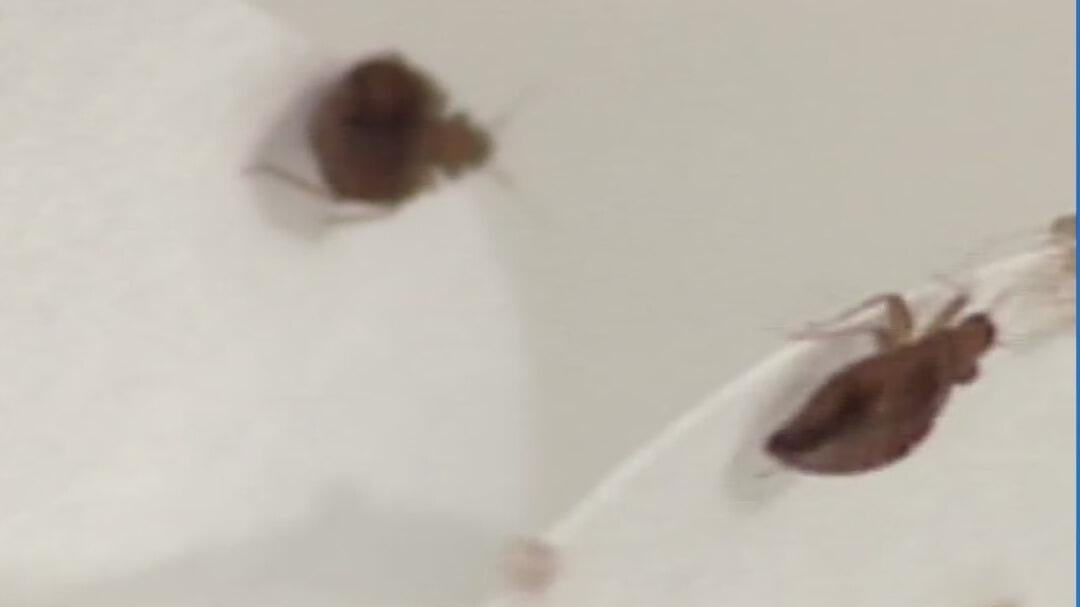Dallas-Fort Worth ranks 5th in worst bed bug-infested areas in the U.S., study says
If you need some motivation to get your laundry done, Dallas-Fort Worth is one of the most bed bug-infested areas in the country, according to .
The annual study ranks DFW as the fifth worst city for bed bugs in the U.S., topped only by Los Angeles, Cleveland, New York and reigning champ Philadelphia. The rankings are determined by the number of bed bug control services.
The study says it's likely due to our warm climate, plus a high rate of tourism and travel. Bed bugs thrive in warm, humid conditions and love to hitchhike.
How to identify bed bugs
Full-grown bed bugs are brown or reddish-brown with an oval-shaped body about the size of an apple seed, the , while their young are much smaller, translucent or whitish-yellow, and can be very hard to see. Bed bugs come out at night to feed on human blood.
Bed bugs are not known to transmit diseases, but their bites can cause allergic reactions.
in a variety of places, including homes, hotels, public transportation, and even some businesses.
How to know if you've been bitten by a bed bug
Bed bugs eat all three meals of the day at once, so look for the "" sign.
The bites themselves often look like red bumps, but can also vary slightly from person to person. It may take several days for the marks to appear.
Bed bugs are not attracted to dirt and grime and for specific blood types. Some people may have a strong reaction to bed bug bites, while others have little to no reaction, and it may appear that bed bugs are targeting specific individuals.
According to the Mayo Clinic, bed bug bites don't usually need treatment and disappear on their own within a week or two. If needed, you can ease symptoms by using a skin cream containing hydrocortisone or an oral antihistamine.
Travel tips
When you arrive at a hotel or vacation rental, do a thorough search of the bed — underneath it, behind the bed frame, on the sides of the mattress and in between the mattress and frame.
; check the seams of the bed sheets. If you see anything that looks like rust, call management.
If you're able, turn over the mattress, no matter what size. Bed bugs like to congregate in dark places.
blood stains or small black dots that look like mold or ground pepper.
Spraying with, and it can kill their eggs — but it only kills on contact. The bugs must be sprayed directly, and it can be very difficult to find and expose them.
Keeping your belongings off the ground in your accommodations is another way to prevent bedbugs from hitching a ride. Instead, opt to place items on the tops of dressers or other spots higher up.
Believe it or not, the safest place in a hotel room to keep your luggage is in the bathtub. The critters are less likely to be found in the bathroom, where tile floors are less inviting.
Examine your luggage when you repack and inspect it for any black or brown spots and launder all the clothing you brought with you with the hottest water when you get home.
Preventing bed bug infestations
If you've got some time on your hands and want to busy yourself with a home DIY project, you can buy some caulk and work to seal the cracks and crevices in your home, the. This will help prevent bed bugs and other pests from entering.
Keep personal belongings as well as bags you've brought in from outside off the floor and away from your bed.
Treating bed bug infestations
- Call an exterminator. Treatments cost anywhere from $1-$8 per square foot.
- Look for EPA-registered pesticides that have bed bugs listed on the label.
- meant for outdoors, inside.
- Wash clothing and bedding at a high temperature.
- Seal mattresses and box springs in protective covers, . With covers that seal, the bed bugs will get trapped inside and die.
- Steam cleaning and vacuuming can help, but may not be enough to rid your home of the critters.
- Keep inspecting for bed bugs at least every 7 days in case any eggs remain.




